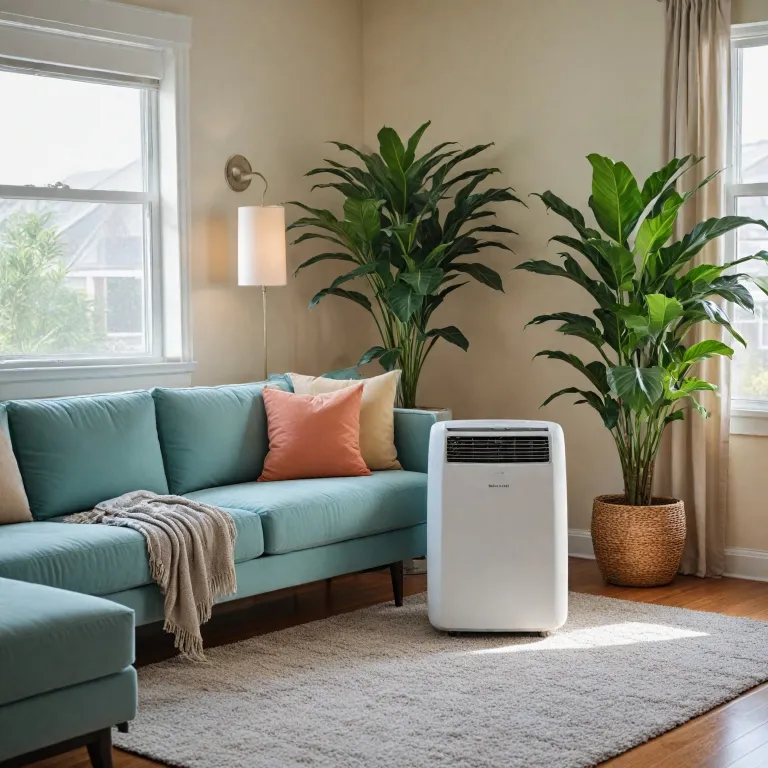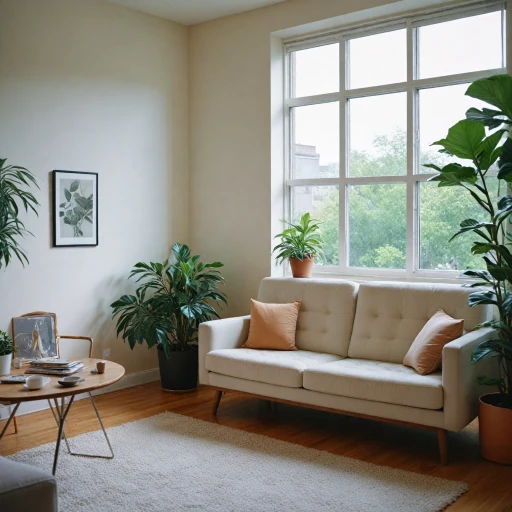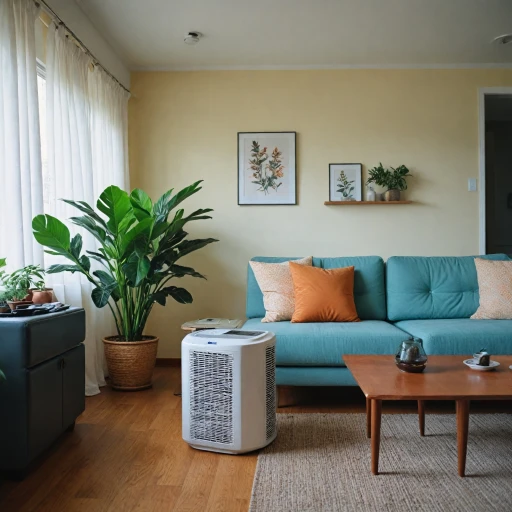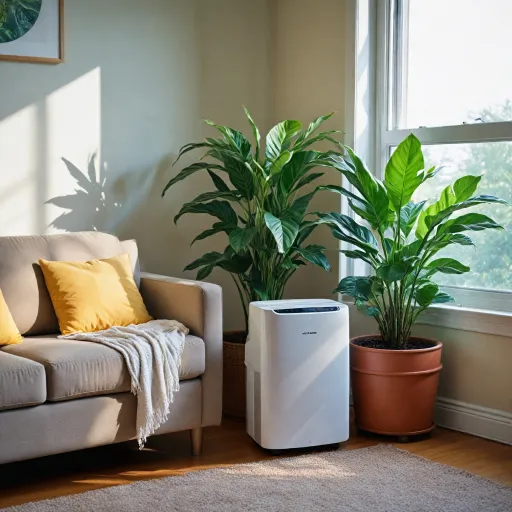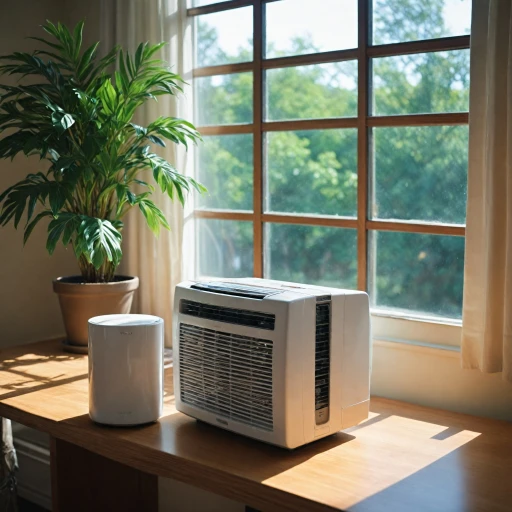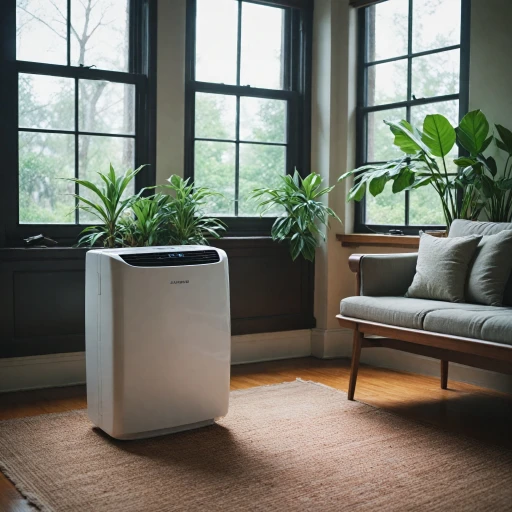
Understanding BTU and Its Importance
Decoding the Importance of BTU in Portable AC Units
Understanding the British Thermal Unit (BTU) is crucial when choosing a portable air conditioner. BTU measures the cooling capacity of an air conditioning unit, representing the amount of heat it can remove from a room. A 14,000 BTU portable air conditioning unit is designed to cool spaces of up to about 500 square feet effectively, although this can vary depending on room conditions and location.For those unfamiliar with BTUs, they essentially determine how well a particular unit can deliver comfort in a given space. The ideal BTU rating ensures that the portable unit efficiently cools without wasting energy or leaving a room too warm. It's akin to finding the right gear in a car; too low, and you'll struggle up the hill; too high, and you're wasting fuel.
Moreover, while shopping for the correct BTU SACC (Seasonally Adjusted Cooling Capacity), be aware of the room's layout and potential heat sources. A room with large windows or lots of direct sunlight might require a unit with a higher BTU rating. Additionally, rooms with multiple heat-generating electronics might also need more robust cooling capabilities.
When choosing a portable air conditioner, other features like fan speeds, dehumidifier capabilities, and efficiency play crucial roles. Most units offer various fan modes and a dehumidifier fan function, allowing users to manage the climate tailored to specific needs. Perusing customer reviews can provide insights into the performance and reliability of a unit, helping to avoid potential frustrations.
For more on understanding portable air conditioners, delve into our comprehensive guide that breaks down the mechanics and applications of these versatile appliances. ", }
Key Features to Look For
Must-Have Elements of Portable Cooling Options
To select the best 14,000 BTU portable air conditioner, it’s vital to focus on key features that ensure optimal performance and convenience. Here are some critical aspects to consider:- Cooling Capacity: Evaluate the square feet your space requires cooling. A 14,000 BTU unit generally suits medium to large rooms, providing efficient and reliable cooling.
- Precision Controls: Look for adjustable remote controls and fan speeds. Increased flexibility in temperature regulation significantly enhances room comfort.
- Dehumidifier Functionality: Many portable units come with a dehumidifier mode, which helps in reducing room humidity, especially essential during sultry months.
- Efficient Hose System: Single or dual-hose units can influence how quickly the air conditioner cools your space. Dual-hose models often offer more efficient cooling by using one hose to intake and another to expel air.
- Integrated Fan: Selecting a model with a built-in fan can further circulate cool air efficiently across your space, assisting the cooling process and delivering refreshing comfort.
- Window Kit: A comprehensive window kit is necessary for setting up the exhaust system. Ensure that it is adaptable to the window styles in your home.
- Noise Levels: Always consider models that offer a sleep mode feature, which lowers fan speed and thus reduces noise during night hours, providing a quieter environment.
- Brand and Customer Service: Choosing reputable brands like the Midea Duo, known for their effective customer service, guarantees support when issues arise.
Energy Efficiency Considerations
Factors Impacting Energy Efficiency in Portable Air Conditioners
When considering a 14,000 BTU portable air conditioner for your space, energy efficiency is a crucial aspect. This not only helps in reducing utility bills but also contributes to environmental conservation. Here are several factors to evaluate:- Energy Efficiency Ratio (EER): This metric measures how efficiently an air conditioning unit uses energy to cool a room. A higher EER signifies better energy efficiency, indicating the air conditioner is likely consuming less electricity to provide cooling.
- Inverter Technology: Units incorporating inverter technology adjust their compressor speed as needed, offering more precise temperature control and reduced power consumption.
- Programmable Features: Models with programmable timers, sleep modes, and adjustable thermostat settings are designed to optimize energy usage when cooling your room.
- Dehumidification Capabilities: A unit with a combined dehumidifier function, like the Midea Duo, might use less energy while improving air quality by reducing humidity levels.
- Fan Speeds and Modes: Multiple fan speed settings and operational modes allow for flexible cooling, ensuring that the air conditioner uses energy proportional to the demand.
- Implementation of Eco Modes: Certain air conditioners offer eco-friendly modes that reduce power draw without compromising cooling capacity.
Installation and Maintenance Tips
Easily Set Up Your Cooling System
When it comes to portable air conditioners, having the right installation and maintenance plan significantly boosts your unit’s performance and longevity. Here’s what to keep in mind to ensure a seamless experience with your portable air conditioning unit:- Choose the Right Spot: Position the unit near a window and a power outlet. This minimizes the hose length, optimizing the cooling efficiency by reducing the distance air needs to travel.
- Secure the Window Kit: Most portable air conditioners come with a window kit to vent hot air outside. Make sure it fits securely, avoiding any gaps that could let hot air back in, thus maintaining the cooling capacity.
- Ventilation and Drainage: Ensure the exhaust hose has no kinks and is short and direct. Some models, like the Midea Duo, may have a built-in dehumidifier, so be sure to handle water drainage according to the product manual to avoid overflow.
- Routine Cleaning: Regularly clean the air filters and check for dust build-up, especially around the fan and vents. This should be done every few weeks to preserve BTUs effectively and maintain energy efficiency.
- Monitor Performance: Pay attention to the unit’s cooling output. If you notice a drop in cooling efficiency, it might require a simple cleaning or professional maintenance to handle any fan or inverter issues.
- Customer Support: Many brands, including those offering portable air conditioners with remote control features, provide customer service for any installation hiccups or disruptions in cooling performance.
Comparing Popular Models
Weighing Your Options
When it comes to purchasing a 14,000 BTU portable air conditioner, comparing popular models is essential to ensure you select the best unit for your needs. Each product offers unique specifications and features designed to accommodate various preferences and room requirements.- Cooling Capacity and Efficiency: Begin by examining the cooling capacity of each unit. A 14,000 BTU portable air conditioner efficiently cools spaces up to around 500-700 square feet, depending on factors like the room’s thermal load and insulation. It's wise to consider the BTU SACC (Seasonally Adjusted Cooling Capacity) ratings, as it provides a more comprehensive understanding of the conditioner’s cooling performance under different conditions.
- Design and Features: Many models come equipped with features such as a remote control, sleep mode, and adjustable fan speeds, providing enhanced convenience and user-friendly operation. For increased flexibility, look for units with multiple hose configurations, such as dual hose systems, which often provide more efficient cooling than single hose units.
- Dehumidification and Air Quality: Consider whether the model includes a dehumidifier function, which can help maintain optimal humidity levels while the conditioner cools. Some units integrate a dehumidifier fan to help circulate air and improve air quality, adding another layer of comfort to your indoor environment.
- Customer Satisfaction: Reading customer reviews can offer insights into the real-world performance and reliability of different units. Pay attention to feedback on customer service, especially in terms of the manufacturer’s support and responsiveness.
- Top Models to Consider: The Midea Duo and other high-rated models ensure that you receive a reliable performance. Explore models that provide inverter technology for improved energy efficiency, reducing your electricity bills.
Troubleshooting Common Issues
Resolving Issues With Your Portable Air Conditioner
Even the best portable air conditioning unit can sometimes run into problems. Understanding common issues and knowing how to address them can save you a great deal of inconvenience and potential service costs. Here are some common issues you might encounter with your 14,000 BTU portable air conditioner and tips for troubleshooting them.
- Ineffective Cooling: If your portable unit isn't cooling as effectively as it should, first check the fan speeds and make sure the cooling capacity matches the room size. It's also possible that the filters are clogged, restricting airflow. Cleaning or replacing the filters may resolve this. Ensure that the hose is not kinked, as this can impede ventilation.
- Leaking Water: Most portable air conditioners, including those with a dehumidifier function, may sometimes leak. This is often due to a full water tank. Emptying the tank and ensuring the unit is on a level surface usually solves the problem. Checking the drain hose for clogs can also be a solution.
- Odd Noises: Portable units can make unexpected sounds if the internal components are loose. Make sure the unit is on a stable, even surface. If the noise persists, contacting the customer service for further assistance might be necessary.
- Error Codes on Display: Your portable air conditioner might show error codes to indicate specific issues. It's essential to read your user manual to decode these messages and follow any suggestions for troubleshooting from the manufacturer.
- Remote Control Issues: Ensure that the batteries are good, and there is no obstruction between the remote and the unit. Also, check if the remote is compatible with the model you're using.
The capability of a unit to consistently cool a room is the hallmark of a good portable air conditioner. Despite the aforementioned troubleshooting methods, regular maintenance is vital. This includes cleaning the filters periodically and inspecting the portable air conditioner kit, hoses, and window seals for any wear or damage. Maintaining your system ensures that your portable air conditioner continues to offer comfort and reliability throughout its service life.
